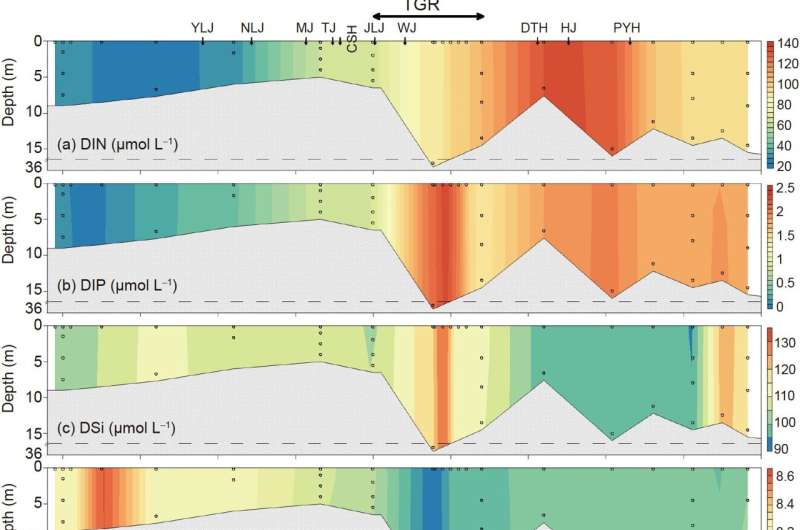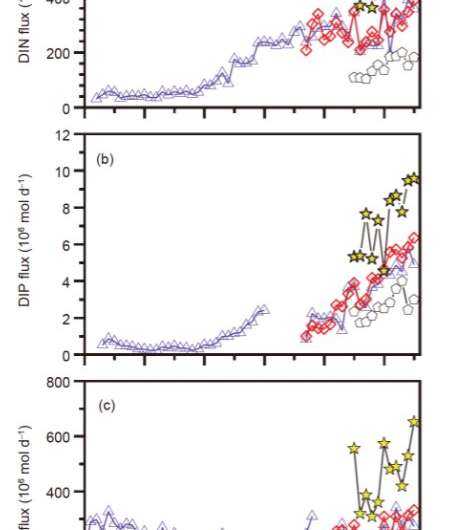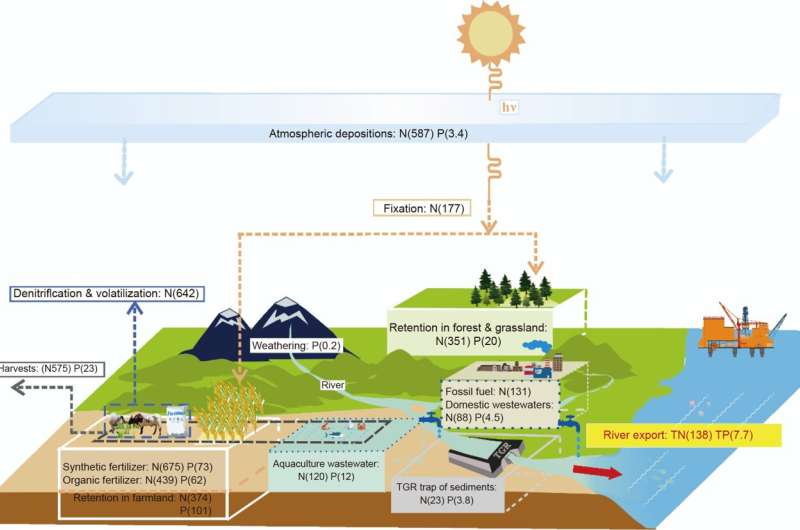This article has been reviewed according to Science X's editorial process and policies. Editors have highlighted the following attributes while ensuring the content's credibility:
fact-checked
peer-reviewed publication
trusted source
proofread
Nutrients of the Changjiang river system linked to the land-use changes and climate variability

This study examines the state changes of nutrients (nitrogen, phosphorus and silicon) from one of the ten largest river systems in the world, the Changjiang, based on field expeditions and time-series data since early 1980s. The study covers an area of ~80% of the whole drainage basin (i.e., 1.8×106 km2) and 70% of water course, including main streams and 15 major tributaries.
A considerable increase in anthropogenic nutrients (e.g., nitrogen and phosphorus) appears when the river leaves the Qinghai-Tibetan Plateau, and changes in species ratio have been identified from some of the major tributaries draining through high population and extensive agriculture areas. This influence can be tracked further downstream all way to the estuary.
Different from the previous studies, the present work provides evidence that the Three Gorges Dam and the reservoir have a rather limited impact on the so called "Trapping of Nutrients." Examination of data from 2003 to 2016 indicates that there is a lack of systematics (i.e., trends) between upstream from the reservoir and downstream from the dam, even for dissolved silicates.

Time-series data at the river mouth starting in the 1980s indicate continuously increasing amounts of dissolved inorganic nitrogen and phosphorus. Nitrogen in particular started to be high the river in early 1980s, while a considerable increase in phosphate appeared later in mid-1990s with a higher rate than that for nitrogen. This makes the Changjiang outstanding in terms of loadings and species ratio for anthropogenic nutrients compared to other top-ten world river systems.
Furthermore, the present study reveals that the tidal-influenced deltaic area has an important but previously ignored role in regulating the seaward flux of the Changjiang. Remobilization of nutrients from the tidal-influenced deltaic area contribute additional 5%–10% for dissolve inorganic nitrogen and silicates, but up to 20% for phosphate. Such an amount of nutrients is not related to agriculture but to coastal urbanization.

In comparison to other rivers, watersheds of the Changjiang are still in the accumulation phase for anthropogenic nutrients, and a "legacy" source can sustain relatively high concentrations in the river even in the period of reduction of application of chemical fertilizers in agriculture. Hence, management strategy needs to take into consideration the potential of the legacy source.
At the drainage basin scale, the continuous increase of anthropogenic nutrients in the Changjiang is mainly regulated by the human activities, while the influence of climate variability is rather limited and not systematic based on the current data sets.
More information: Jing Zhang et al, From the water sources of the Tibetan Plateau to the ocean: State of nutrients in the Changjiang linked to land use changes and climate variability, Science China Earth Sciences (2022). DOI: 10.1007/s11430-021-9969-0
Journal information: Science China Earth Sciences
Provided by Science China Press




















